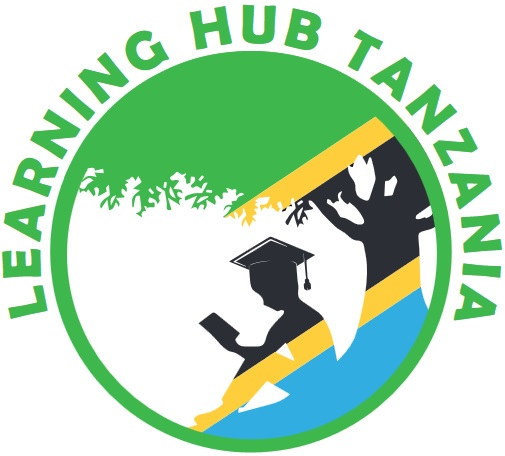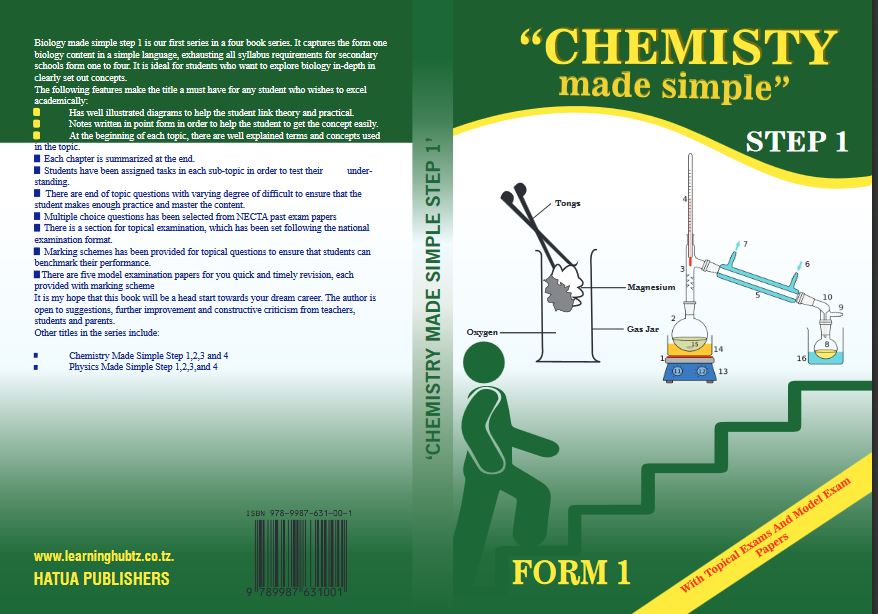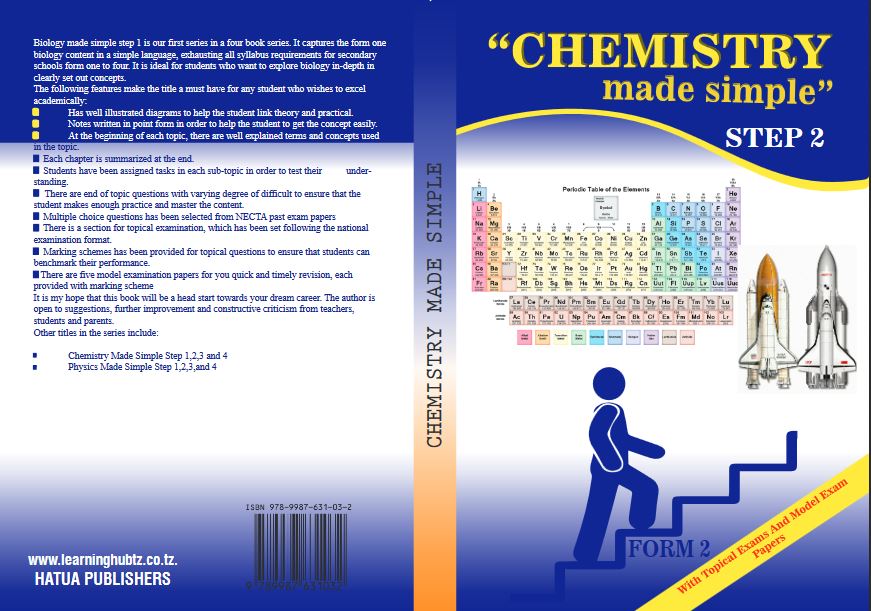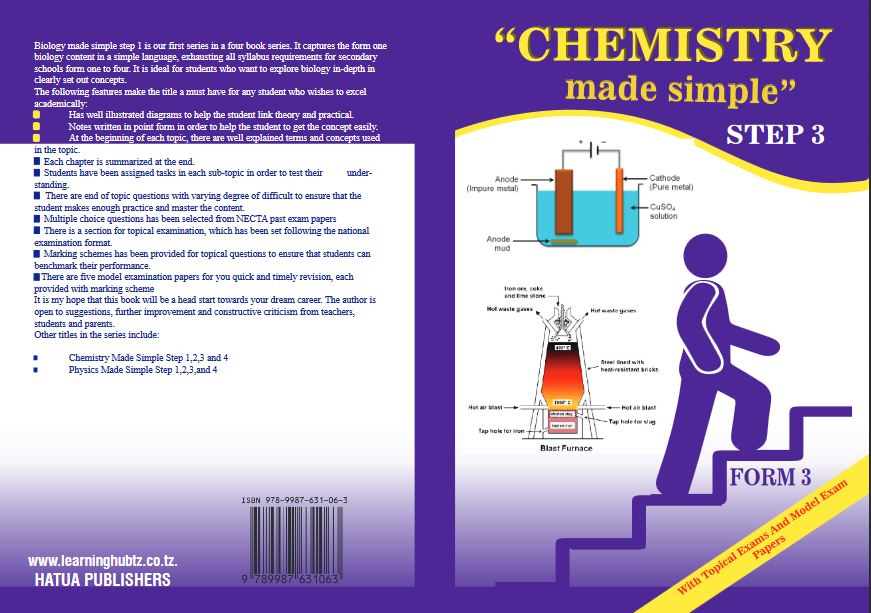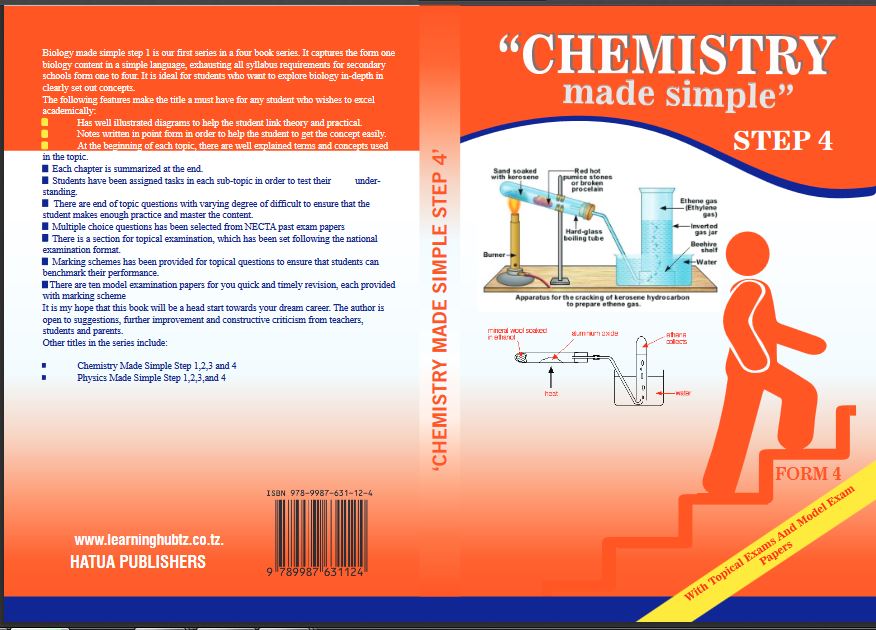THE OFFICE OF THE PRESIDENT, REGIONAL ADMINISTRATION AND LOCAL GOVERNMENT.
SECONDARY EXAMINATION SERIES
MARCH 2025
GEOGRAPHY FORM THREE
TIME: 2:30HRS
INSTRUCTIONS
- This paper consists of three(3) sections A, B and C with a total of ten (10) questions
- Section A carries fifteen (15) marks, section B seventy (70) marks and section C fifteen (15) marks.
- Answer ALL questions in all sections
- Write your names and stream on the top center in every page of your examination
- ALL answers should appear in this question paper in the space provided.
SECTION A
1. For each of the items (i)-(x) choose the correct answer from among the given alternative and write its letter besides the item number in the answer booklet provided. (@1mark=10 marks)
(iii) Tanzania is expecting to benefit a lot from the current Standard Gauge Railway (SGR) project. The following are some of the importance of this project except;
- A It will cause civil war
- B It will improve trade relations with neighboring countries.
- It will create employment opportunities
- It will encourage industrial development
- It will save time for transportation.
(iv) If you are living in urban center and you are interested in keeping livestock. What type of livestock keeping would be suitable for you?
- Nomadism
- Ranching
- Transhumance
- Pastoralism
- Sedentary
(v) Form four students at Pengo village (75°W, 78° N) were watching the football on TV at 7.30 pm on Tuesday. At what time and day people in Keira village (45° E, 06° S) will be watching the same match?
- 3:30 am Wednesday
- 12:30 pm Tuesday
- 11:30 am Wednesday
- 3:30 pm Wednesday
- 09:30 am Tuesday
i. The solar system is made-up of the sun, planet and other heavenly bodies which revolve around the sun, which planet has the shortest orbit?
- Pluto
- Mercury
- Mars
- Earth
- Venus
(ii) Suppose you want to carry out a field study on factors which used to classify the climate of a place, what are the best components of weather you are going to consider?
- Temperature and rainfall
- Temperature and cloud cover
- Rainfall and sunshine
- Cloud cover and humidity
- Sunshine and humidity
(iii) The tourist reported enjoying the temperature of Ihefu wetland in Mbeya at 1500 meters above sea level, which is 32C. They also planned to travel from Ihefu to Unguja in Zanzibar which is at sea level. What might be the temperature experienced by the tourist in Zanzibar?
- 23°C
- 0.6 °C
- 9 °C
- 41 °C
- 19 °C
(iv)The name given to a boundary that demarcates solid materials from the molten mantle is known as:
- Asthenosphere
- Gutenberg
- Mohorovic
- Mesosphere
- Core
(v) All the following are famous tourist attraction sites in Tanzania except?
- Mikumi wildlife, Tarangire and Ruaha
- Serengeti national park, Mount Kilimanjaro and Mikumi
- Selous reserve, Tarangire and Mikumi Park
- Tsaro, Turkana and Oldonyo Lengai
- Tarangire, Ruaha reserve and Serengeti national park
(vi) Dormant volcanic mountains are those which:
- Have never experience eruption
- Have erupted once but are no longer active
- Continue to erupt occasionally
- Erupt only when there is an earthquake
- Erupt every
ix. The people of Utengule Village are served by electricity from TANESCO and sometimes they use energy that they produce from Organic materials after being broken down by bacteria in an oxygen free environment. What is the name of such energy source?
- Hydroelectric power
- Biogas
- Solar energy
- Wind energy
- Solar energy
2. Match the items in List A with response in List B by writing the letter of the correct response below the corresponding item number in the table provided.
| List A | List B |
|
|
SECTION B. 70 MARKS
3. (a) Classify three pollutants from manufacturing industries.
(b) Explain three effects of these pollutants to the people and environment.
4. (a) Convert the following scales according to the instructions given
- “One centimeter on the map represents two and half a kilometer on the ground”. Convert this scale into Representative fraction (R.F.) scale.
- 1:100000. Convert into statement scale.
- 1:50000. Convert into statement scale.
(b) State the compass direction for each of the following compass bearings.
- 280º ..
- 135º ..
- 45º ....
(c) How can the positions of objects be shown in any topographical map? Mention four(4) points.
5. Define the following terminologies:
(a) Bush following
. . . . . . . . . . . . . . . . . . . . . . . . . . . . . . . ....
. . . . . . . . . . . . . . . . . . . . . . . . . . . . . . . . . . . . . .
(B)Land reclamation
. . . . . . . . . . . . . . . . . . . . . . . . . . . . . . . . . . . . . . .
. . . . . . . . . . . . . . . . . . . . . . . . . . . . . . . . . . . . . .
. . . . . . . . . . . . . . . . . . . . . . . . . . . . . . . . . . . . . .
(c)Hydrological cycle . . . . . . . . . . . . . . . . . . . . . . . . . . . ..
. . . . . . . . . . . . . . . . . . . . . . . . . . . . . . . . . . . . . .
. . . . . . . . . . . . . . . . . . . . . . . . . . . . . . . . . . ...
. . . . . . . . . . . . . . . . . . . . . . . . . . . . . . . . . . . . . .
(d)Water pollution . . . . . . . . . . . . . . . . . . . . . . . . . . . . .
. . . . . . . . . . . . . . . . . . . . . . . . . . . . . . . .. . . . . .
(e)Tourism . . . . . . . . . . . . . . . . . . . . . . . . . . . . . . . .
. . . . . . . . . . . . . . . . . . . . . . . . . . . . . . . . . . . . . .
6. (a) Point out five ways to which Tanzanians benefits from solar energy.
i. ____________________________________________________________________
ii. _______________________________________________________________________
iii. ________________________________________________________________________
iv. ________________________________________________________________________
(b) In which ways the Tanzania society benefits from weather forecasting?
Give five points
i. ____________________________________________________________________
ii. _____________________________________________________________________
iii. _____________________________________________________________________
iv. _____________________________________________________________________
v. _____________________________________________________________________
7. John, a form two student from Mgudeni Secondary School was unable to differentiate some geographical terms; he decided to seek advice from his fellow students. As among of form two students, help John him to differentiate the following geographical terms,![]()
i) Plains and plateaus
ii) Umbra and penumbra
iii) Secondary and tertiary activities
iv) Natural forest and artificial forest
v) Solar energy and solar system
8. Mr. Kasheko was watching the video program showing the ejection of molten materials with in the earth`s crust or onto the earth `s exterior. This process accompanied with the outbreak of ashes,gases and smokes. This molten materials sometimes cool solidify within the earth’s crust to form both hypabyssal and plutonic rocks. And sometimes other materials reach the surface to form volcanoes.
- What is the genetic process observed by Mr. Kasheko from the video program?
- With examples explain the types of features produced by the process named in (a) above?
- Outline five (5) environmental impact resulted from the process in (a) above.
- 8. (a) What is a river capture?
- (b) With a well labeled diagram, show features formed in (a) above.
9. (a) What is a river capture?
(b) With a well labeled diagram, show features formed in (a) above.
10.(a) Planet Earth is composed of different land masses known as continents from which we can get different relief features . Mention at least five (5) of them.
(b) All land masses are surrounded by large body of salt water as Oceans.Mention five of them.
SECTION C. 15 MARKS
11. With reference to Rufiji River Basin Project and TVA, explain how community surrounding these project can benefit from them. (Six points)
FORM THREE GEOGRAPHY EXAM SERIES 199
FORM THREE GEOGRAPHY EXAM SERIES 199
PRESIDENT’S OFFICE, REGIONAL ADMINISTRATION AND LOCAL GOVERNMENT
SECONDARY EXAMINATION SERIES,
MID TERM ONE – MARCH-2024
GEOGRAPHY FORM THREE
Time: 3Hours
Instructions
- This paper consists of sections A, B, and C with a total eleven (11) questions.
- Answer all question in the sections A, B and two (2) questions from section C.
- Section A carries sixteen (16) marks, section B fifty four (54) marks and section C carries thirty (30) marks.
- All writing should be in blue or black pen, except for diagrams that must be drawn in pencil.
- Communication devices and any unauthorized materials are not allowed in the examination room.
- Write your Examination Number on every page of your answer booklet (s)
SECTION A (16 MARKS)
Answer all questions in this section
- For each of the following items (i-x).Choose the best answer among the given alternatives given and writer it’s later beside the item number in answer booklet provided
- What will be happened when the orbit of heavenly body is nearest to the sun.
- Perihelion
- Aphelion
- Sunrise
- Equinox
- Sunset
- Masawe prefer to transfer his car from Japan to Tanzania. Which mode of transport would be best to use
- Water
- Pipeline
- Cable
- Animal
- Road
- Alex prefers to cultivate vegetables, maize and beans in his farm. What type of farming is he practicing
- Mixed farming
- Bush farming
- Large scale farming
- Crop rotation
- Shifting cultivation
- Sometimes people living central Tanzania experience sudden vibration of the earth surface cause by movement of the molten rocks below or within the crust. Identify the instrument to be measure the magnitude of such vibration
- Hygrometer
- Thermometer
- Wind vane
- Richer scale
- Barometer
- It is noon in Addis Ababa (390 E). What will be the time in Dar-Es Salaam which is located along the same longitude
- 12.00pm
- 12:00 am
- 06:00pm
- 11:00 am
- 6:00 am
- The prediction of the state of the atmosphere can be done through both modern and traditional methods. Which among the following does not fit among the Traditional method used to predict weather?
- By looking at the position of the moon
- By hearing the voices of frogs
- By practicing female circumcision
- By hearing the voices of the birds
- By experiencing the change of wind direction
- Form two students at Mwenzi Secondary School were discussing Tourism in Tanzania. The observed that minimum impact to environment form of tourism fails in this category?
- International tourism
- Domestic tourism
- Eco- tourism
- Economic tourism
- International Tourism and domestic tourism
- You are living in Urban centre and you are interested in keeping livestock. What type of livestock keeping wpuld be suitable for you?
- Normadism
- Ranching
- Transhumance
- Pastoralism
- Sedentary
- The rock which do not allow water to pass through them are said to be
- Water table
- Sand stone
- Porous
- Impermeable
- Rock debris
- During dry season, most plants shade their leaves on a way to reduce the amount of water released. The correct term for this process is
- Evaporation
- Precipitation
- Transpiration
- Condensation
- Infiltration
- Match the term on list A with correct phrase in list B by writing the correct letter on table given
| LIST A | LIST B |
|
|
SECTION B
54 MARKS
Answer all questions in this section.
- Study the map extract of SIKONGE ( SHEET 137/2) and answer the following questions
- Using the given RF scale, determine the length of the road in Kilometers from grid reference 740829 to grid reference 760881
- Determine the areas at right hand side of northing 800 in Km2
- With examples name 2 ways used to show height of the land on mapped area
- Under what climate region is the given mapped area found?
- (a)Differentiate between meteorites and asteroids
b) List four domestic uses of solar energy
- Differentiate between the following terms
- Lake and river
- Plains and plateau
- Continental shelf and continental slope
(b) Give three examples of Fold Mountains in the world
- Describe the formation of cyclonic rainfall
- Carefully study the climatic data in table below and answer question that follow
| MONTH | TEMP 0C | RAINFALL (MM) |
| J F M A M J J A S O N D | 9 10 11 2 16 20 23 24 21 18 14 11 | 102 66 84 51 42 18 3 3 31 86 104 112 |
- Calculate the annual range of temperature for the station
- Calculate the mean annual temperature
- Calculate the total annual rainfall
- Draw a climograph to present the data and comment on nature of climate
- Mention four vegetable types found in station
- What are the major economic activities conducted in the stations
- Earth quakes are common phenomenon with examples, explain five effects of earth quakes
SECTION C
30MARKS
Answer two questions from this section
- What are main challenges facing livestock keeping in Tanzania?
- Describe six sources of renewable energy found in Tanzania.
- Outline the challenges facing Natural gas extraction in Tanzania.
FORM THREE GEOGRAPHY EXAM SERIES 162
FORM THREE GEOGRAPHY EXAM SERIES 162
PRESIDENT OFFICE REGIONAL ADMINISTRATION AND LOCAL GOVERNMENT
SECONDARY EXAMINATION SERIES
COMPETENCE BASED ASSESSMENT
GEOGRAPHY FORM THREE
MID-TERM EXAMS MARCH – 2023
SECTION A (15 Marks)
Answer all questions
1. For each of items (i) – (x), Choose the correct answer from among the given alternative beside item number in answer booklet provided
- Which set of elements of weather are mainly used to classify climate of an area?
- Humidity and precipitation
- Temperature and rainfall
- Temperature and sun shin
- Temperature and humidity
- Wind and temperature
- Which one is a major environmental problem facing most of African cities
- Loss of Biodiversity
- Soil erosion
- Deforestation
- Air pollution
- Overgrazing
- Suppose you ware walking along river Rufiji and you had a chance to observe the drainage with uniform rock structure and ruck resistance, suggest the name of that dranage Pattern
- Dendritic
- Trellis
- Redial
- Parallel
- Centripetal
- Suppose you are living in an urban center and you are interested in keeping livestock which type of livestock keeping would be suitable for you?
- Sedentary
- Transhumana
- Ranching
- Pastoralism
- Nomadism
- Which ears crust procession caused the formation of Ulugum Mountains
- Prolonged denudation
- Wrinkling of the earth crust
- Sinking of Earth crust
- Faceting of earth’s crust
- Earthquake and volcanoes have clearly identifiable pattern over the Earth’s surface which area is not phone to earth quires and volcanoes?
- Coast of Alaska
- East Africa Rift valley
- Andes mountain
- Himalayan belf
- Sahara desert
- Rambo used to see a group of herdmers moning periodically with their cattle between Lowland and highland in search of water and pocture. Which term refers to such movement?
- Pastoralism
- Zero grazing
- Transhumance
- Nomadism
- Destocking
- It was a wonderful event after several years when a river becomes yours again in its valley. Identify the process that took place
- Regina
- Delta
- Capture
- Abrasion
- Rejuvenation
- What is the social economic importance of reserved forests to the society?
- Tourism
- Mining
- Lumbering
- Forestry
- Agro forestry
- When the moon’s shadow casts over the earth’s surface the phenomenon is known as
- Lunar Eclipse
- Solar Eclipse
- Equinoxes
- Summer solstice
- Winter solstice
2. Match the items in LIST A with responses in List B by writing the letter of correct response beside item number in answer booklet provided.
| LIST A | LIST B |
|
|
Answer all questions in this section
3. Study carefully the map extract of Ilonga (Sheet 265/2) and then answer the following questions
- Citing evidence from the map, saddest three possible economic activities carried out in the mapped area?
- Describe the vegetation distribution in the area
- Describe Drainage Patten found in the map.
- Give the name of the main made Linear physical feature found in the map
- Calculate the area of the whole map in km2
4. Study carefully the data below that show the environment of form six students at Bagamoyo secondary school from 1980 – 1985 then answer questions that follow.
| Year | No. of Students |
| 1980 1981 1982 1983 1984 1985 | 100 150 175 200 225 300 |
- Present the data above by pie chart
- Comment on the trend of the pie chart (a) above
- What are the merits of using this method a part from method used in (a) above give (3) points.
- What are alternative methods that can be used to present the data above? Give two (2) points
5. (a)Mary is a good cartographer. She intends to produces a contoured map of Morogoro. What type of survey method would You advise her to apply
(b)a part from producing contoured map, what is the other significance of the survey you mentioned in (a) above
(c)Mention and Explain uses of any three instrument which are used in method mentioned above.
6. Suppose you want to conduct research about millet production in your district 2008 is 2018 and your interest is to know whether the production has increased or decreased. You plan is to consult famer who were directly involved in the mane production for the said period and visit the District Agriculture office for more information.
- What will be best research approach for your study
- Name the main source of data for your study
- Identify two (2) individual who will be respondents for your study
- Mention other six (6) possible sources of research problem for the smiler study
7. Carefully study the photograph below and answer questions that follows
- Name the activity taxing place in photograph
- Give three (3) importance of the activity you have
- With two (2) reason suggest the type of photograph showed above
- What are the three (3) negative impacts of the activity to the environment?
- What is the scale of the activity you have named in (a) above
SECTION C (30 Marks)
Answer two questions from this section
8. a)A group of students were sitting at a high steep face of a ruck a long the sea coast of the Indians ocean. They observed the breaking movement of ocean waves in which ocean water is through up the beach and returned under gravity down the shore
- What are two wave processes the student observed
- Mention four erosion processes involved in that ocean wave
(b)Identify three factors that affect wave erosion
(c)Draw a well labeled diagram to show the following features resulting from wave erosion
(i) Blow hole (ii) Cave
9. Mr Saguti wants to establish a plastic processing industry in Visitu Town. Analyse six factors he should consider before locating the industry
10. “Tanzania has realized that improving transport is inheritable for sustainable socio-economic development”. Justify this quotation by giving seven points.
FORM THREE GEOGRAPHY EXAM SERIES 115
FORM THREE GEOGRAPHY EXAM SERIES 115
THE PRESIDENT’S OFFICE
MINISTRY OF EDUCATION, REGIONAL ADMINISTRATION AND LOCAL GOVERNMENT
SECONDARY EXAMINATION SERIES
GEOGRAPHY MID TERM EXAMINATION
FORM THREE-2021
Time: 3Hours
Instructions.
- This paper consists of section A, B and C with a total of 10 questions
- Answer all questions in section A and B and two questions from section C.
- Section A carries 15 marks, section B 55 marks and section C 30 MARKS
- Map extract sheet for Sikonge(sheet 137/2) is provided.
- Programmable calculators, cellular phones and any other unauthorized materials are not allowed in examination room.
- Write your number on every page of your answer booklet.
SECTION A (15 Marks)
Answer All questions in this section.
(i). Which of the following is the correct factor for growth in the mining industry?
- Availability of capital
- Absence of labour
- Presence of cities like Dar es Salaam
- Political instability
(ii) Quarts is a compound element of:
- Aluminium and granite
- Reldspar and carbon dioxide
- Manganese and iron
- Iron, granite, carbon dioxide.
(iii) The intensity of an earth quake is measured by an instrument called?
- Epicenter
- Chronometer
- Seismograph
- Ritcher scale.
(iv) The magnitude of the earth quake refers to:
- Effects produced by the earth quake.
- Large amplitude waves known as I- waves.
- Point at which earth shake.
- Total amount of energy released.
(v). Nomadic farming in agricultural activities refers to:-
- Animal keeping through moving from one place to another.
- Permanent cultivation of cash crops
- Keeping animals by zero grazing.
- Crop cultivation of food stuff crops only.
(vi). Which among the following is not a characteristic of shifting cultivation?
- Sites are selected in the virgin forest
- Simple tools are used like hand hoes.
- Few crops are grown, mostly starchy crops
- Keeping animals and crops cultivation
(vii). Plantation in agricultural system is referred to as:-
- Small scale agriculture
- Intensive subsistence farming
- Large scale agriculture.
- Sedentary shifting method.
(viii). A major problem facing river basin development project is:-
- Silting
- Flood
- Diseases
- Land Fragmentation.
(ix) Which among the alternatives is a problem facing Tennessee River valley Authority (T.R.A) scheme?
- Labour shortage
- Siltation
- Diseases
- Environmental degradation.
(x). The following are the hard wood species except?
- Oak, Ash and Beach
- Pines, Far and Spruce
- Oak, Ash and Pines
- Ash, Pines and Cyprus.
2. Match the items from list A with the correct response in List B by writing a letter of the correct answer.
| LIST A | LIST B |
|
|
3. (a) Define the term Climate.
(b).What is the difference between climate and weather?
(c). what is the importance of climate to human activities.
4. (a) Give five factors which control the distribution of temperature
(i) ………………………………………………………………………
(ii) ………………………………………………………………………
(iii) ………………………………………………………………………
(iv) ……………………………………………………………………….
(v) ………………………………………………………………………..
(b) State four types of clouds
(i) ………………………………………………………………………
(ii) ………………………………………………………………………
(iii) ………………………………………………………………………
(iv) ……………………………………………………………………….
(c) Mention four importance of weather forecasting
(i) ………………………………………………………………………
(ii) ………………………………………………………………………
(iii) ………………………………………………………………………
(iv) ……………………………………………………………………….
5. (a) Give three methods used to measure the distance of maps
(i) ……………………………………………………………………………
(ii) ……………………………………………………………………………
(iii) ……………………………………………………………………………
(b) Mention three ways on how map scale can be expressed
(i) ………………………………………………………………………
(ii) ………………………………………………………………………
(iii) ………………………………………………………………………
(c) If a statement scale is 1cm to 0.5km, calculate how many meters will be represented by 1cm.
(d). Change the following scales into the required formats.
a) 150cm to Kilometres if the map scale is 1:25,000
b) The distance of 800cm if the scale is 1:20,000
c) Change 1:100,000 into statement scale.
d) Draw a linear scale to read 1:50,000 if the ground distance is 20km
6. (a) Distinguish between volcanism and volcano.
(b) Classify rocks according to mode of formation.
(c) Identify three minerals that are found in igneous rocks.
7. (a) Briefly explain the following process involved in weathering;i) freeze-thaw, solution and exfoliation.
(b) Outline three factors that influence the rate of chemical weathering
SECTION C. (30 Marks)
Answer two (02) questions from this section.
8. (a) Explain the effects of rapid population growth on small scale farming.
(b) What are the advantages of small scale agriculture? (Give five (5) points)
9. Briefly explain measures taken by the government of Tanzania in alleviating problems facing livestock keeping.
10. Discuss the main problems facing mining industry in Tanzania.
FORM THREE GEOGRAPHY EXAM SERIES 44
FORM THREE GEOGRAPHY EXAM SERIES 44
THE PRESIDENT’S OFFICE
REGIONAL GOVERNMENT AND LOCAL GOVERNMENT
MID TERM EXAMINATIONS- MARCH 2020
033/1 GEOGRAPHY FORM THREE
Time: 3Hours
Instructions:
- This paper consists of sections A, B and C with a total of TEN (10) questions.
- Answer all questions in sections A and B and two (2) questions from section C
- All writing should be in blue or black pen, except for diagrams that must be drawn in pencil.
- Cellular phones and any unauthorized materials are not allowed in the examination room.
- Write your Examination Number on every page of your answer booklet(s)
SECTION A: 25 marks
Answer all questions in this section.
1. For each of the items i-x choose the correct answer from among the given alternatives and write its letter behind the item number.
(i) Autumn, winter, spring and summer are the result of:-
(a) Monsoon
(b) Lunar eclipse
(c) Rotation
(d) Revolution
(e) Tides
(ii) Which of the following is not a factor influencing temperature of a place?
(a) Aspect
(b) Ocean current
(c) Altitude
(d) Eclipse
(e) Length of a day
(iii) Which among the following features is the impact of water action in the desert?
(a) Yardang
(b) Gullies
(c) Bad lands
(d) Sinkholes
(e) Rock pedestals
(iv) What is the direction of 22![]() ?
?
(a) SES
(b) NEN
(c) NWN
(d) SWS
(e) None of the above
(v) Which of the following is formed due to depositional features of the river?
(a) Water fall
(b) Delta
(c) Hanging Valley
(d) Tombolo
(e) Cirque
(vi) The maximum and minimum temperature are obtained from an instrument called?
(a) A barometer
(b) A Six’s thermometer
(c) An anemometer
(d) Kilometer
(vii) The solar system is made up of:-
(a) Sun, planets and interplanetary gases
(b) Atmosphere and hydrosphere
(c) Planets, clouds and gases
(d) Hydrosphere, atmosphere and clouds
(viii) A delta which is formed in a lake is called ………delta
(a) Moraine
(b) Laustrine
(c) Alluvial
(d) Acute
(e) Cuspate
(ix) What is the compass bearing of WNW?
(a) 27![]()
(b) 33![]()
(c) 31![]()
(d) 32![]()
(e) 292.![]()
(x) Destruction, wastage and removal of parts of the earth’s surface;
(a) Denudation
(b) Frost action
(c) Exfoliation
(d) Deposition
2. Match the items in LIST “A” with the responses in LIST B by writing the letter of the correct response below the corresponding item number in the table provided.
| List A | List B |
|
|
3. (a) What is meant by Moraine erosion?
(b) Describe four (4) processes which are involved in Moraine erosion.
4. Study the data in the following table and answer the questions that follow.
Environmental Workers In Ten Streets Of Arusha City.
| STEET | A | B | C | D | E | F | G | H | I | J |
| NUMBER OF WORKERS | 12 | 06 | 20 | 03 | 12 | 02 | 12 | 03 | 18 | 09 |
(a) Find the range of workers in this city.
(b) Calculate the (i) Mean (ii) Median (iii) Mode of these workers.
(c) Calculate variance and standard deviation of the workers.
5. (a) Describe the following terms;
- distributaries
- lagoon
- levee
(b) Delta is formed under different conditions. Outline three conditions necessary for its formation.
6. Study carefully photograph provided then answer the questions that follows.

(a) Suggest the title of photograph
(b) (i) Name the type of forest seen in the photograph
(ii) Give two characteristics of the forest named in (i)
(c) Outline three ways of interpreting the photograph given
(d) (i) Identify the product in the middle ground of the photograph
(ii) Give two uses of the product in the middle ground of the photograph.
SECTION C:
Answer only one question in this part.
7. Explain seven ways of improving tourism Industry in Tanzania.
8. Elaborate the problems hindering development of agriculture sector in Tanzania.
9. Analyze five ways of promoting textile industry in Tanzania.
10. Explain the significance of Natural gas production in Tanzani
FORM THREE GEOGRAPHY EXAM SERIES 5
FORM THREE GEOGRAPHY EXAM SERIES 5
Hub App
 For Call,Sms&WhatsApp: 255769929722 / 255754805256
For Call,Sms&WhatsApp: 255769929722 / 255754805256
 For Call,Sms&WhatsApp: 255769929722 / 255754805256
For Call,Sms&WhatsApp: 255769929722 / 255754805256

